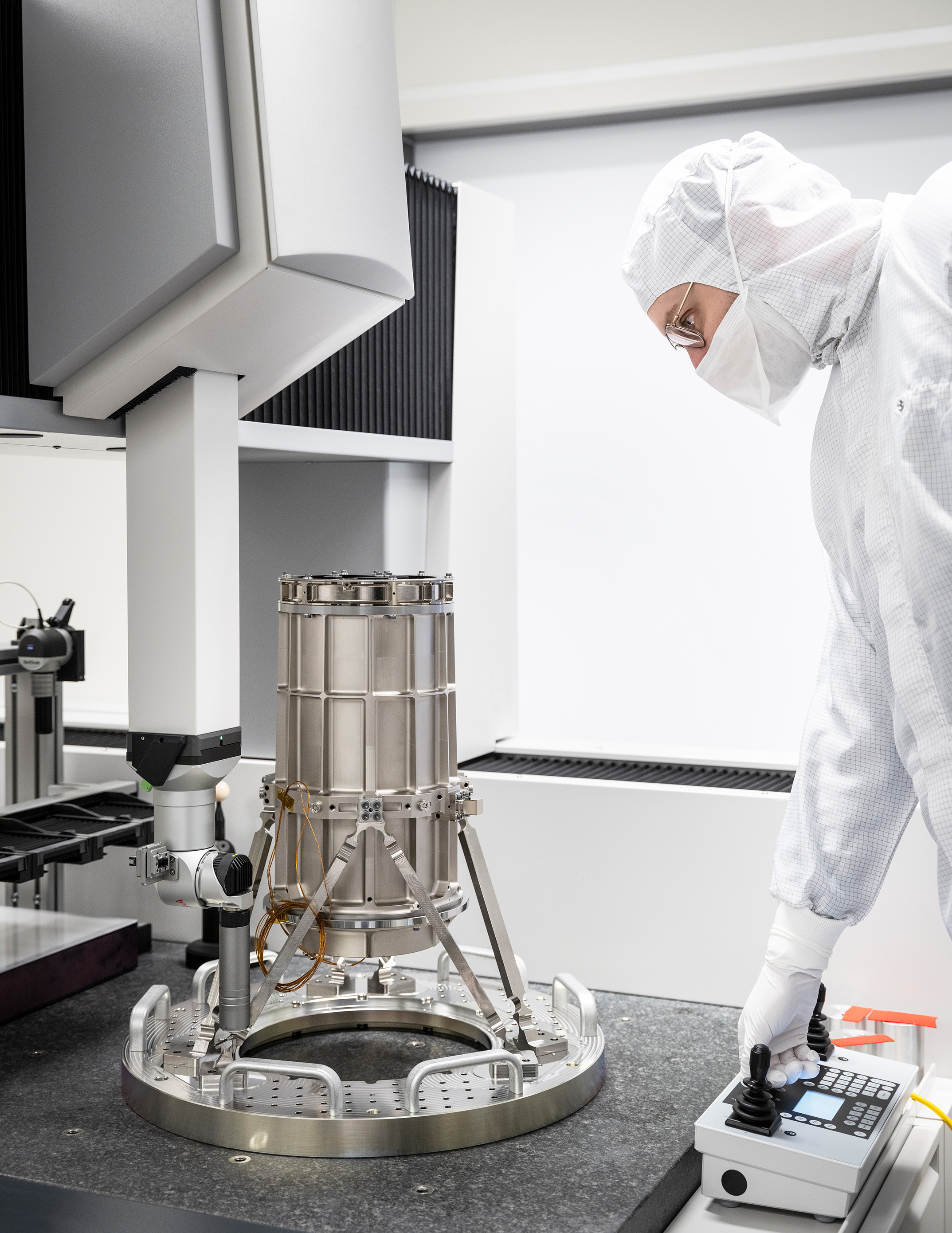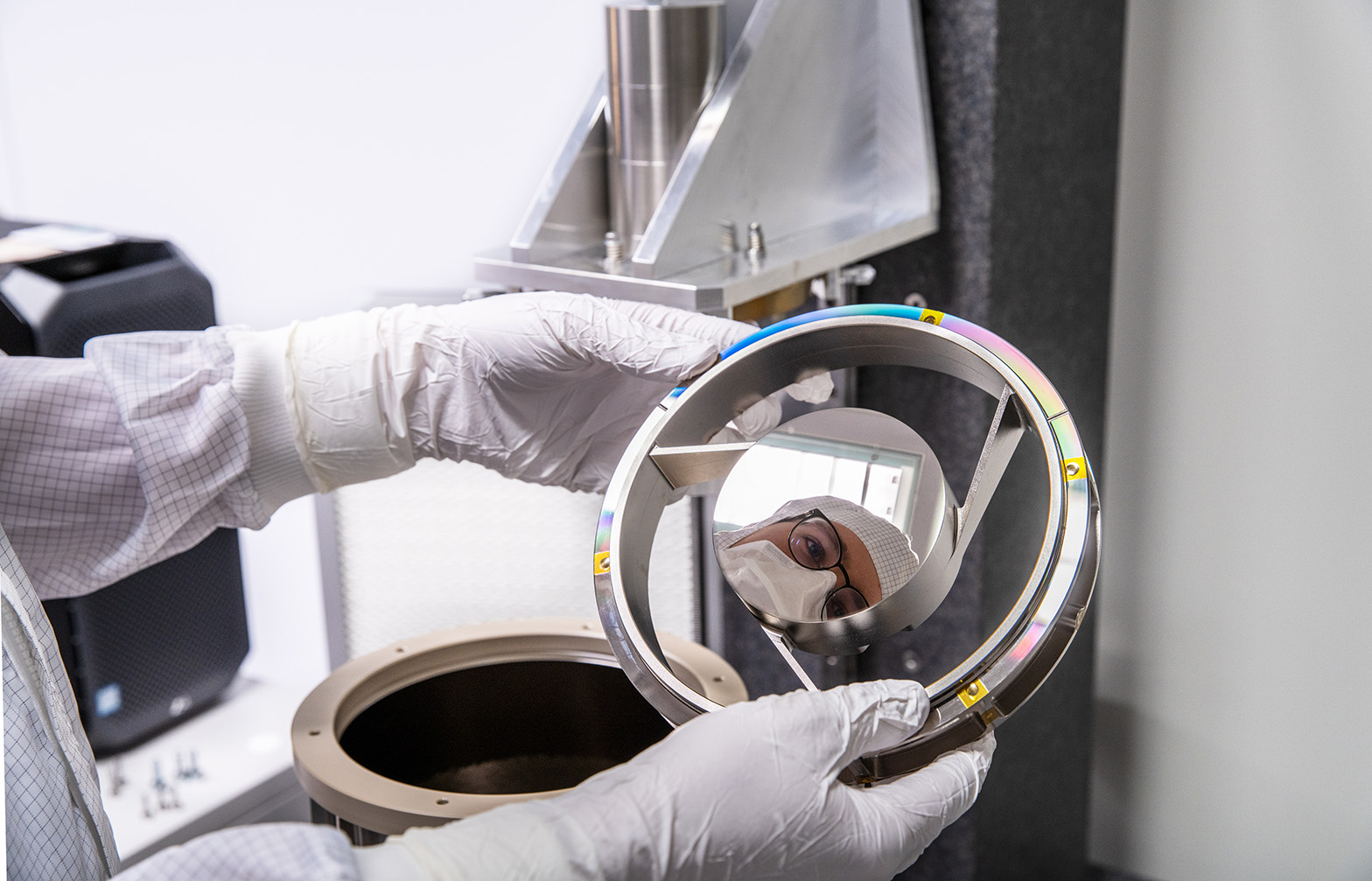Space Tech Expo Bremen: Fraunhofer IOF presents hyperspectral spectrometer-on-chip
Compact space spectrometer for sustainable agriculture
Researchers at Fraunhofer IOF in collaboration with Airbus have developed a hyperspectral spectrometer as part of the “Rainbow” project, funded by the European Space Agency (ESA). The technology enables the creation of digital field maps that can be used in agriculture as precise application maps for location-specific measures. Fraunhofer IOF will be presenting the system at the Space Tech Expo in Bremen from November 18 to 20.
How healthy is a field? How nutrient-rich is the soil? For farmers, these questions are central when it comes to the sustainable use of resources. In the future, these questions can be answered with a glance from space. The combination of Earth observation and data-based analysis is a central component of so-called smart farming, which provides precise information for automated and sustainable agriculture.
As part of the "Rainbow" project, researchers at the Fraunhofer Institute for Applied Optics and Precision Engineering IOF have developed a telescope for Earth observation that can be used to demonstrate the concept of a spectrometer-on-chip. The compact technology enables precise analysis of plant and soil conditions from space. The newly developed system is designed for small-batch production and achieves a spatial resolution of less than 20 meters in the spectral range between 400 and 1700 nanometers. Despite its miniaturization, the image quality remains consistently high.
Space-ready technology for agriculture
The central technological approach is a spectrometer-on-chip concept. The required spectral bands are mapped 1:1 onto a gradient filter that is integrated directly in front of a detector. Compared to other concepts, the design enables efficient adaptation of the spectral channels required for the application thanks to the selectively applied filters.
"The concept allows us to combine all the essential functions of a spectrometer on a single chip," explains Lucas Zettlitzer, researcher in the Precision Optical Components and Systems Department and project manager for Rainbow at Fraunhofer IOF. "Instead of complex opto-mechanical components, optical filters select the relevant wavelengths. This results in a compact, lightweight, and cost-effective system—with consistent measurement quality."
Compact design and low adjustment effort
At the heart of the system is a Ritchey-Chrétien telescope, which produces particularly precise images with the aid of two aspherical mirrors. "Based on an optical design developed by Airbus, we took on the development and implementation of the telescope," explains Zettlitzer. "Together with our colleagues at the institute, we developed the integration concept, designed the telescope, and implemented all manufacturing processes."
The specially adapted gradient filter was manufactured at the Fraunhofer Institute for Surface Engineering and Thin Films IST based on the EOSS® technology developed there. This technology enables the optical properties of the filter to be adjusted precisely, allowing different wavelengths to be detected accurately.
The researchers paid particular attention to compact design and minimal adjustment requirements—both prerequisites for cost-efficient production and miniaturization. Among other things, this was based on metal optics manufactured at the institute. The system is therefore suitable for use in small satellites and allows flexible and scalable use in future space missions.
Hyperspectral data for sustainable decisions
The spectrometer breaks down the incoming light into narrow wavelength bands and records how strongly the different spectral ranges are reflected by plants and soils. This reveals even minimal differences in vegetation and soil structure that conventional cameras cannot detect. The collected data can then be processed into digital maps that reveal, for example, moisture, nutrient content, or signs of disease in plants. This enables precise and resource-efficient management of agricultural land.
"No residue in orbit"
In addition to the benefits for agriculture, sustainability in space itself is also a challenge that Fraunhofer researchers are addressing. "With our metal-optical systems for space, such as here in the Rainbow project, we are supporting the efforts of the European Union and ESA to avoid creating additional space debris," explains Lucas Zettlitzer. "Our optics burn up completely upon re-entry and leave no residue in orbit."
The project is funded as part of ESA's InCubed+ program and is being carried out by Fraunhofer IOF in collaboration with Airbus Defence and Space GmbH and Fraunhofer IST.


